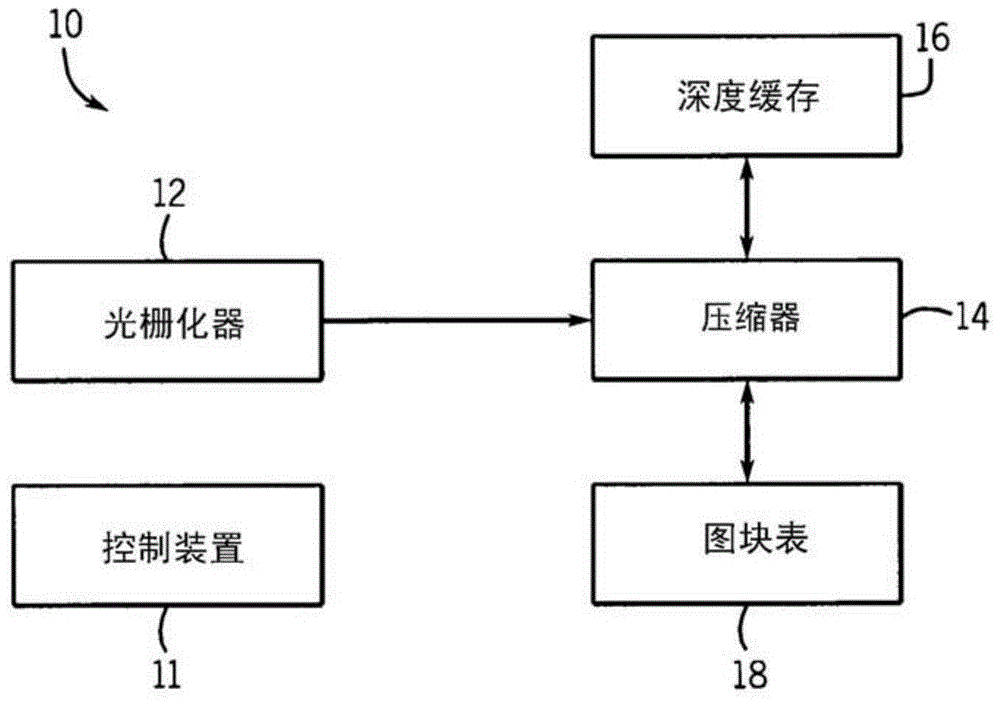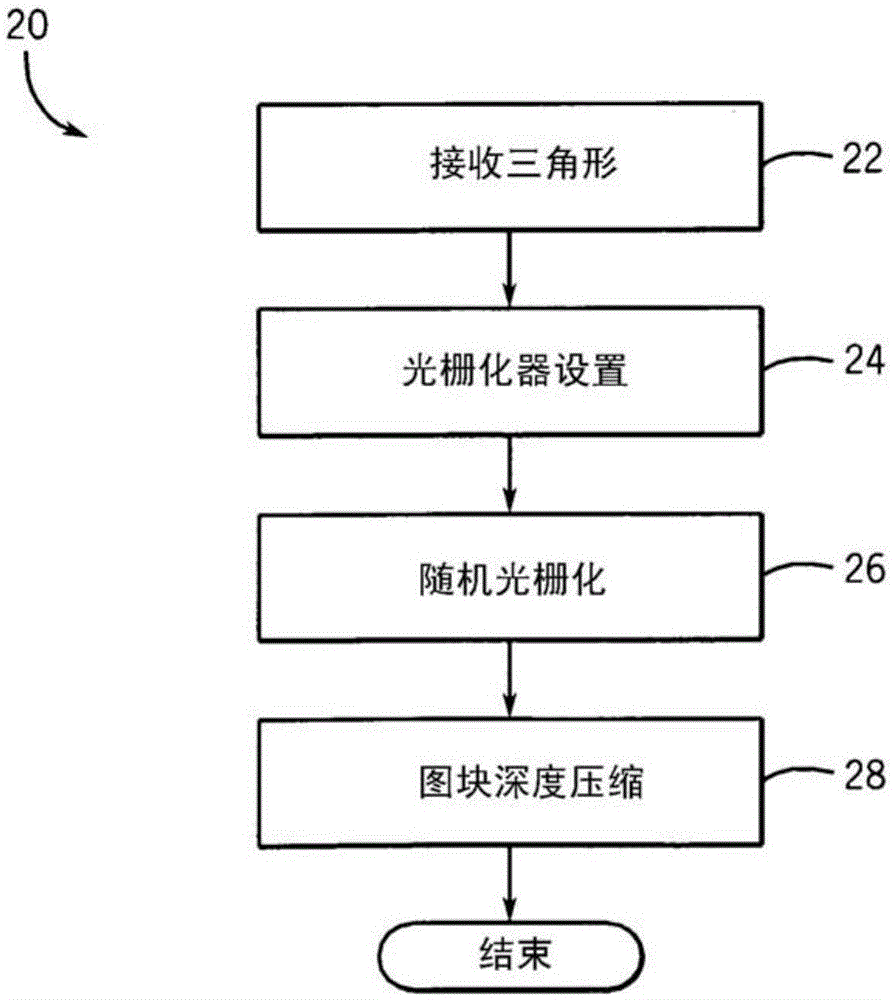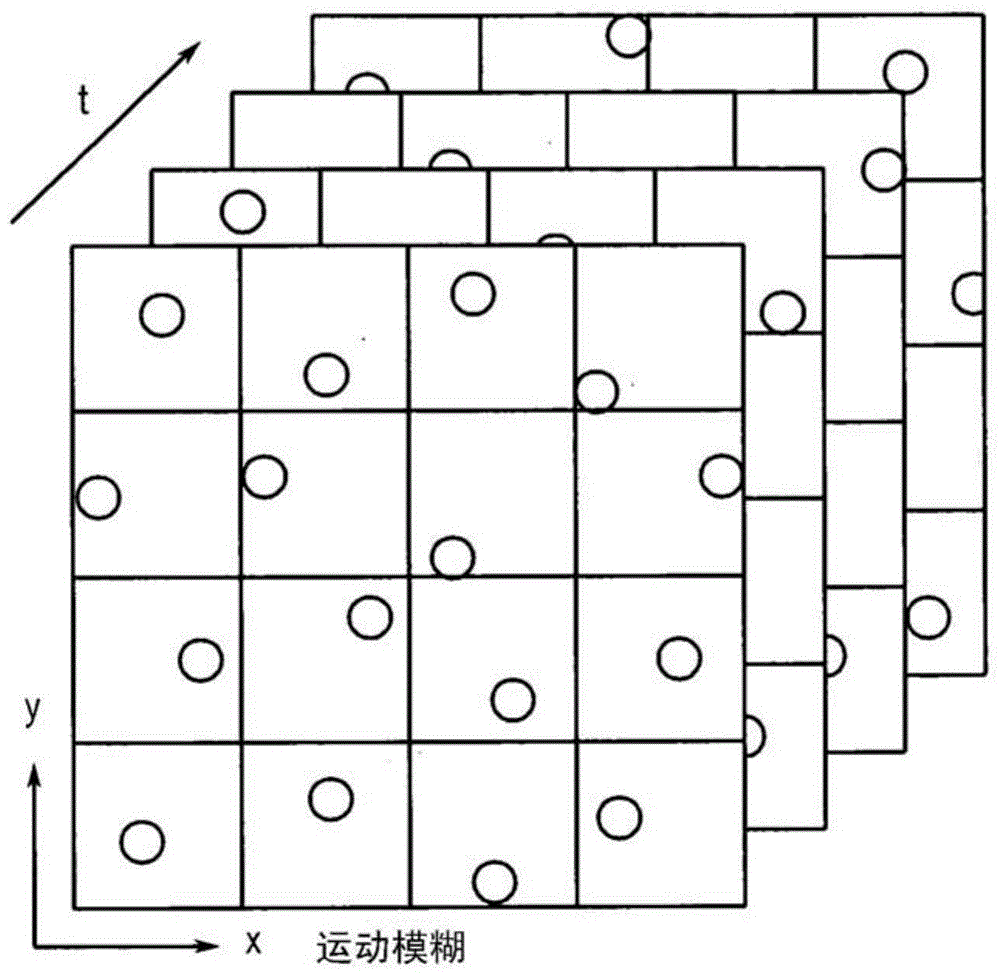Random Depth Buffer Compression Using Generalized Planar Coding
A depth and compressor technology, applied in the field of random depth buffer compression, which can solve problems such as complex depth functions
- Summary
- Abstract
- Description
- Claims
- Application Information
AI Technical Summary
Problems solved by technology
Method used
Image
Examples
Embodiment Construction
[0019] Planar coding can be generalized to include random effects such as motion blur and depth of field. The depth function coefficients are computed in the rasterizer and passed to the compressor. Standard plane encoding uses three coefficients per depth function (ie, plane) in the form d=A*x+B*Y+C to represent the depth of a triangle. When triangles experience random effects such as motion blur and depth of field, the depth function is no longer flat. However, we can still get a depth function in the form d=f(x,y,u,v,t) by storing more coefficients per triangle.
[0020] In some embodiments, the benefits of this approach include a substantially more efficient compression algorithm than the previous approach. This is made possible by providing an analytical representation of the depth function directly from the rasterizer settings, avoiding the cost of finding lower-order representations in the compressor, as in previous approaches. Unlike previous planar compression meth...
PUM
 Login to View More
Login to View More Abstract
Description
Claims
Application Information
 Login to View More
Login to View More - R&D
- Intellectual Property
- Life Sciences
- Materials
- Tech Scout
- Unparalleled Data Quality
- Higher Quality Content
- 60% Fewer Hallucinations
Browse by: Latest US Patents, China's latest patents, Technical Efficacy Thesaurus, Application Domain, Technology Topic, Popular Technical Reports.
© 2025 PatSnap. All rights reserved.Legal|Privacy policy|Modern Slavery Act Transparency Statement|Sitemap|About US| Contact US: help@patsnap.com



